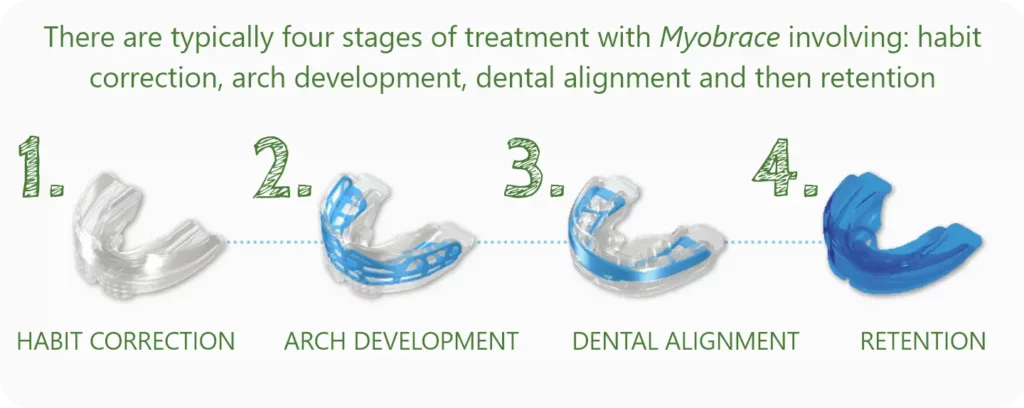
Children between the ages of one and a half to three years old may qualify for minimally invasive, pre-orthodontic intervention treatment options. These are children who are at a young, yet critical age and are showing signs that suggest they need assistance to help support their structural and functional development. Some of these signs may include:
The treatment options we offer for children under three are designed to be functional and accessible for children and parents to incorporate into their routines. These treatment options include functional trainers like Myobrace, Myo Munchee and Chewy Tubes to promote:

Our appliances include:
Click here to learn more about myofunctional therapy at the Center for Airway and Facial Development.